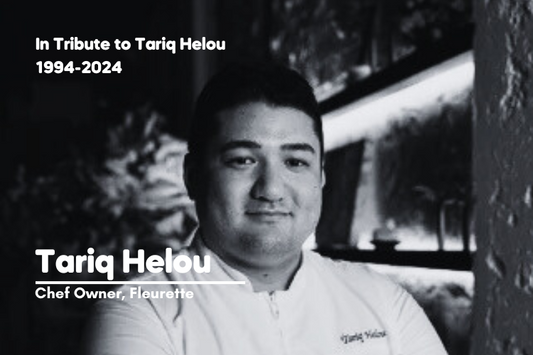Dishes With Tomato Sauce? Consider Sake
Share

We speak to:
Ronald Kamiyama
Managing partner, The Cicheti Group
How can sommeliers improve their sake knowledge?
- Tasting is an important part of learning, so our team tastes together
- Joining with like-minded individuals such as Sake Bottle Share, where friends are always bringing different types of sake from all over Japan. You learn a lot from them
Peruvian-Japanese sommelier Ronald Kamiyama has worked in some of the best restaurants internationally, alongside top chefs such as Daniel Boulud, Mario Batali and Namae Shinobu of three-Michelin star L’Effervescence. He could have gone anywhere with his skills, but he chose Singapore instead, teaming up with the other managing partners of The Cicheti Group.
It is at one of their restaurants that you will find Ronald in his element, especially when it comes to the beverage menu. He curates a distinctive variety of wine and sake on his menu, some of which goes into his cheeky Sommakase Flights.
“My first encounter with sake was working at a restaurant in Montclair, New Jersey, a couple of decades ago. I was a young waiter and guests shared their bottles with me,” he recalls. Much like our other interviewees Adrian Goh and Chi Pin Han, Ronald’s first exposure to sake was at warm temperatures. “I remember the sensation of warmth which felt serene and calm. More so than the flavour, it was the feeling that got me interested.”
With his wine background, how does he decide when to pair a sake or wine with the dishes? Ronald replies, “I think umami flavours need to be present in order for the guests to be more open with sake pairings. Cheese, tomato and mushrooms all contain fantastic natural umami. For example, at Bar Cicheti, whenever there is a strong seafood element with a tomato-based sauce, I would consider sake.”
After moving to Singapore from Japan, Ronald was pleased to find Sake Ten, which brought the kind of sake he would use for pairing while at L’Effervescence. Till today, he selects sake that come from small breweries with more unconventional methods such as Bodaimoto and Yamahai. “The acidity is higher, the flavour is more prevalent, with stronger umami. I believe this matches our chef's bold ingredients at Cicheti Group,” he says.
For sommeliers looking to include sake in their non-Japanese outlets, Ronald has a few tips:
- Most important is understanding the chef's technique in cooking. Look for things that are more suitable for the pairing.
- Think outside the box and be informed about what is out there. Tasting sessions happen quite often across Singapore so be more active and learn about the drinks market.
- Train your whole team by starting with the basics. The region where it is from, the rice that's being used, learning the meaning of sake terminology, such as Junmai, Daiginjo, Nama, Muroke, Genshu, etc. It is also important to learn the culture and language.
From a consumer perspective, wine is often the expected choice. When presented with sake, their initial reaction is often puzzled. After tasting, however, the pairing becomes a new and memorable experience for them. And that - says Ronald with a grin - is the best part of including sake in his beverage programs.
Trade professionals:
You are invited to attend Sake Matsuri’s Trade Show on 15 November 2024 at the iconic F1 Pit Building! Pre-register below for free.
Link: https://sakematsuri.sg/products/sake-matsuri-trade-show-friday-15th-november-2024
Sake Matsuri Trade Show
Date: 15 Nov 2024
Time: 12pm-4pm
Venue: F1 Pit Building, Garage, 1 Republic Boulevard
*Pre-registration is free, $50 for on-site entry
**Open to trade professionals only

